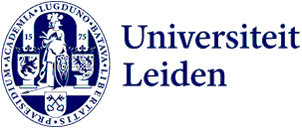
Dominoes of disaster: what happens when industrial sites are not protected?
Industrial sites are built for safety, but are they prepared for security breaches? As concerns grow over threats to national security, these sites are a target. The Securdomino project built a tool to prevent malicious attacks and rethinks how we define security.
On 20 May the symposium Securdomino was held at Leiden University in The Hague. The event marked the conclusion of the four-year Securdomino project, with the afternoon dedicated to sharing its outcomes.
The Securdomino project
The project addresses a critical issue: at large industrial sites a small incident can lead to a cascading domino effect – a chain of events with far greater impact than the original incident. While EU legislation provides extensive safety measures to prevent such incidents, it has not equally addressed security or protection against deliberate malicious threats.
Prof.Dr. Gabriele Landucci, chemical engineer from the University of Pisa, opened the symposium by presenting a video about the project. He explains the urgence of Securdomino: ‘There’s currently no guidance nor tools for the identification of security threats and for the assessment of security risks and the domino effect at chemical processing industries. We developed a tool to do exactly this: security and domino effect risk assessment for industrial sites.’
Prof.Dr. Sanneke Kuipers, professor in Crisis Governance and scientific director of the Institute of Security and Global Affairs of Leiden University, gives the guests another warm welcome. She emphasises the importance of ensuring that all EU citizens are equally protected, 'we think this project can have a positive impact on current industrials sites and contribute to their safety and security. We developed a tool that enables the analysis of the risk of attacks and cascade effects within the chemical industry. The project is truly aimed at bridging the gap between science and practice. By embracing an integrated approach to safety, we address a previously overlooked threat in risk management.'
-
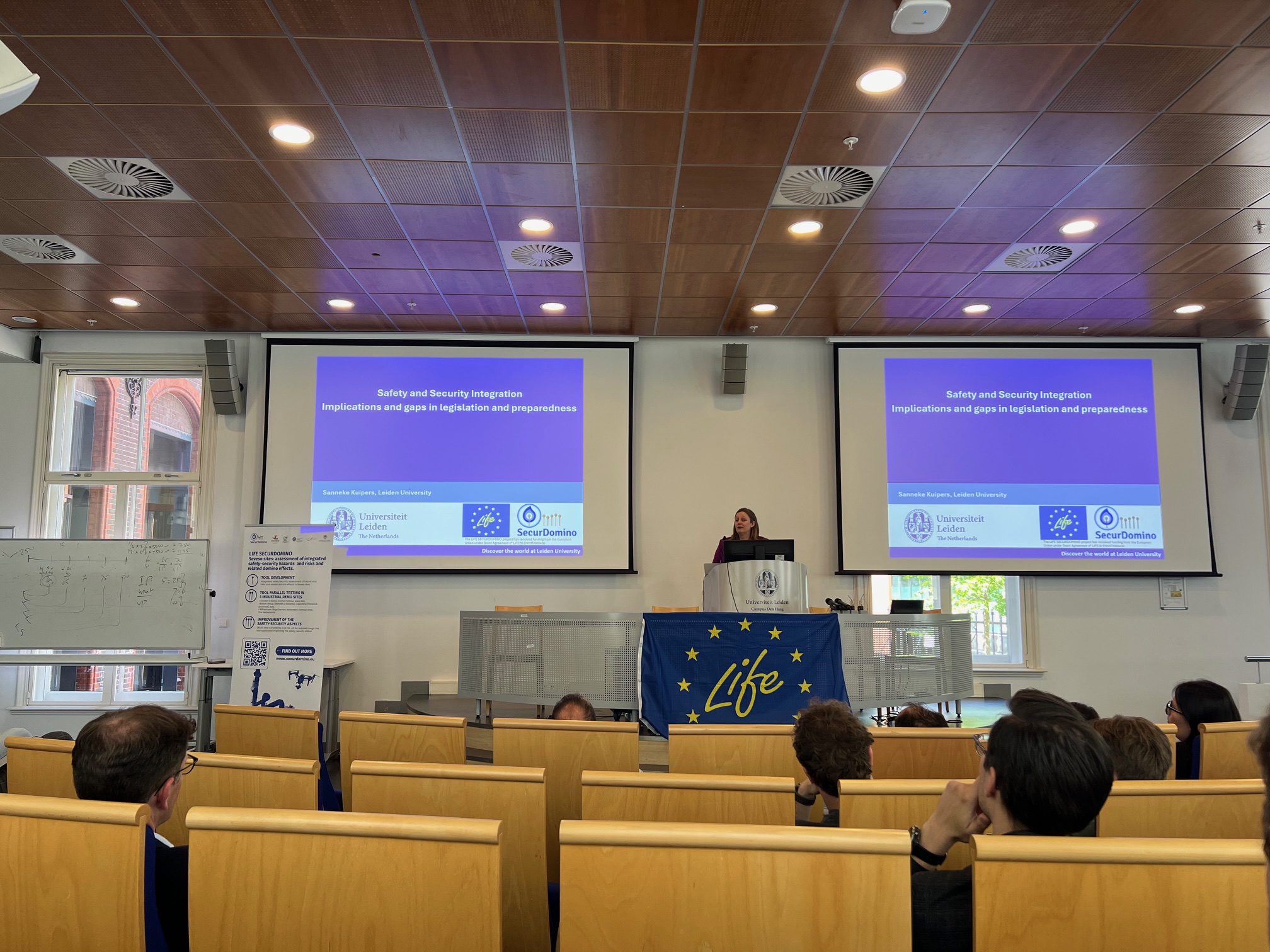
Prof. Dr. Sanneke Kuipers welcoming the attendants of the symposium -
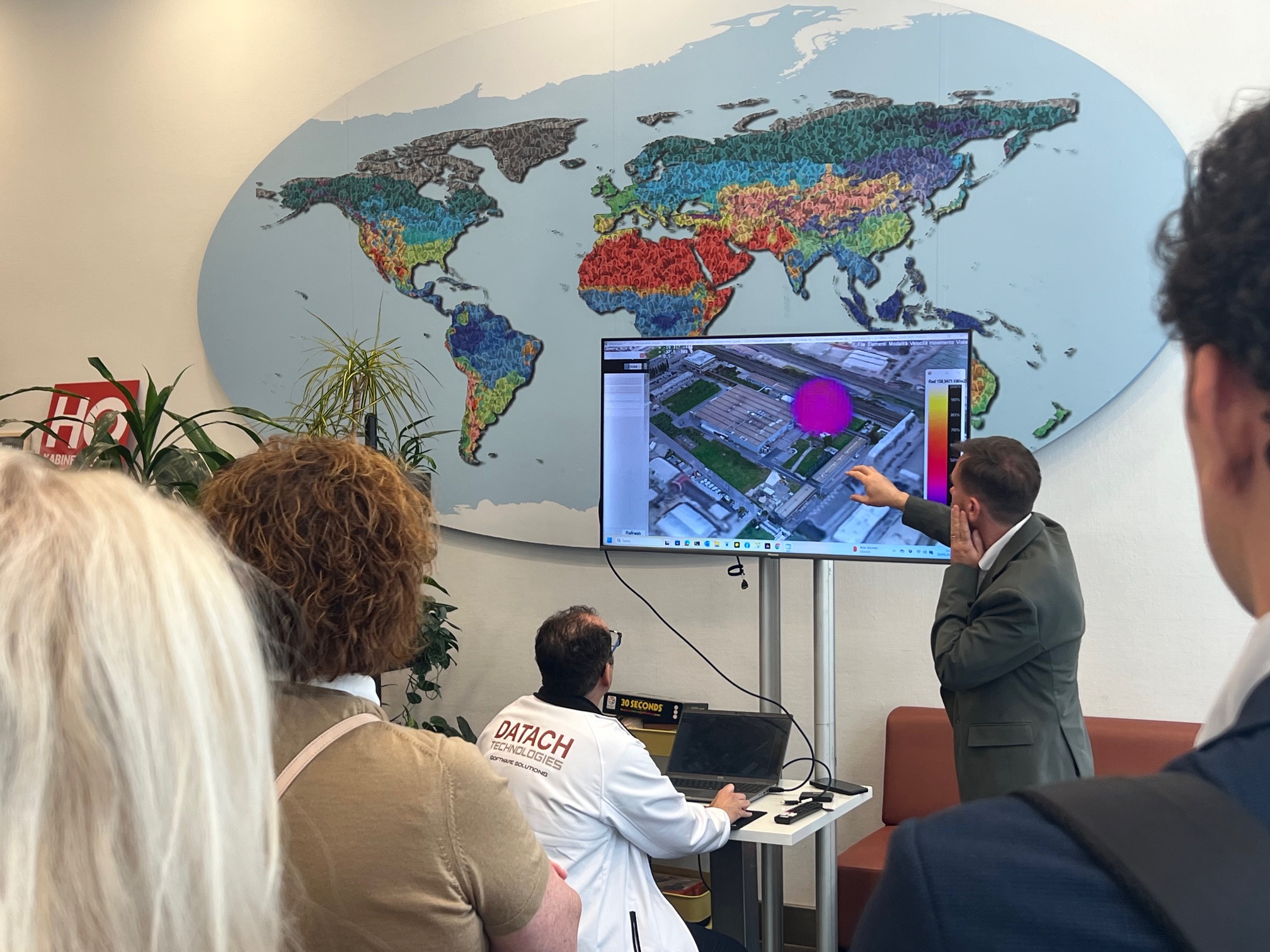
Prof.Dr. Gabriele Landucci demonstrating the software with DataCh -
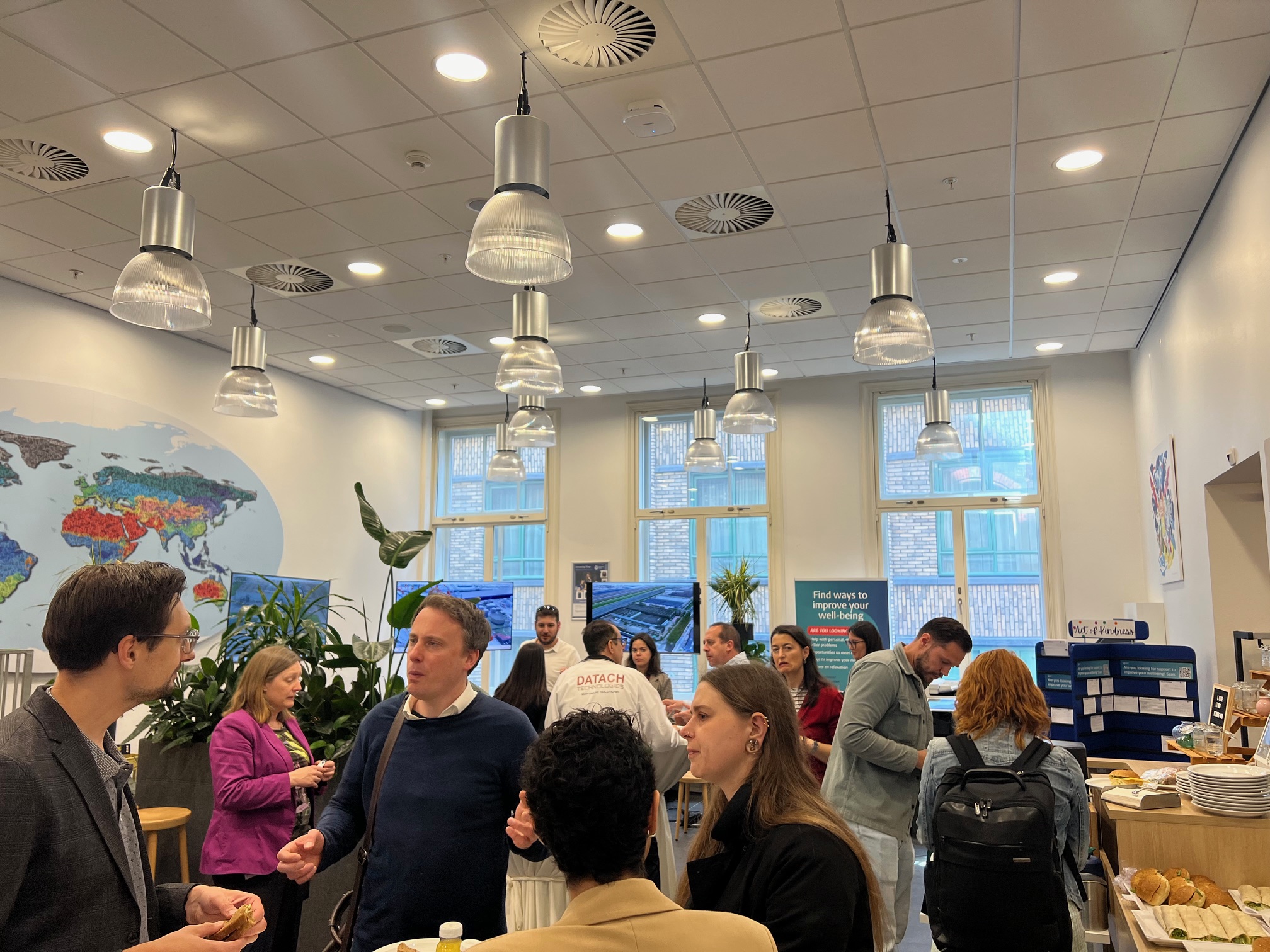
Walk-in lunch -
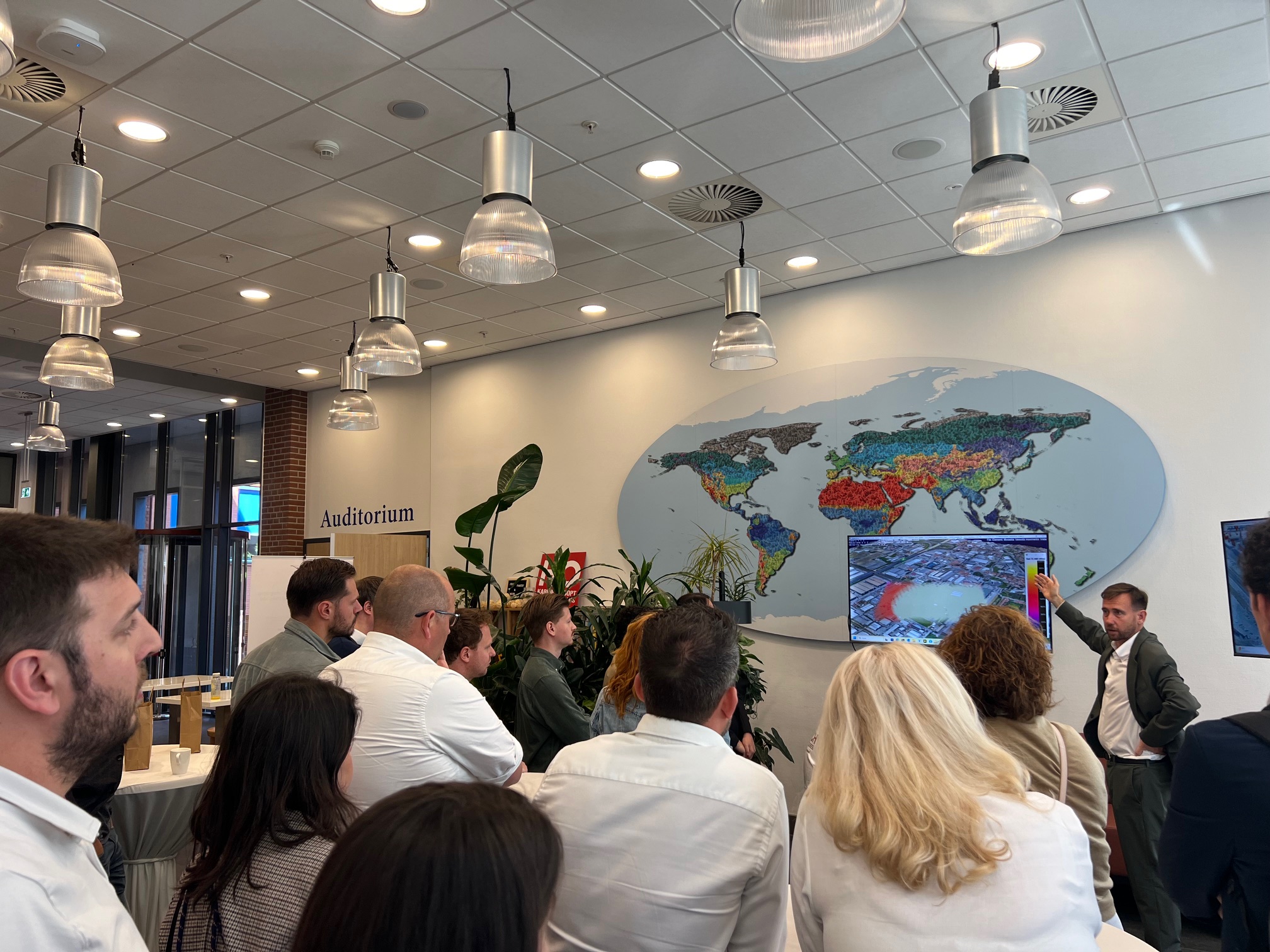
Attendants viewing the software demonstration
Together Leiden University, the University of Pisa, DataCH technologies, Crisisplan BV and ARPAT, worked on the project to eventually realise a tool that allows comprehensive assessment and mapping of vulnerability and risk indexes for industrial sites. In addition to scientists in the fields of crisis management, chemical engineering, and risk analysis, there were also participants from the field. Experts from various safety regions, the Ministry of Justice and Security, the Dutch labour inspection, the Netherlands Institute for Public Safety (NIPV), and the National Institute for Public Health and the Environment (RIVM) were present—organisations for whom this tool could be highly valuable in enhancing the protection of their facilities. Representatives from several chemical companies located in the Rotterdam-Rijnmond port area also took part.
Software demonstration
Demonstrations were provided for three case study sites: two in Tuscany, Italy, and one in The Netherlands. The tool enables pre-incident testing and planning, allowing facilities to make informed policy decisions based on foreseen risks.
Key features of the tool include:
- Identification of potential terrorist routes and attack scenarios
- Visualisation of impact by explosion, firearm and other possible attack options
- Aerial photogrammetry drone inspections
- 3D reconstruction of the plant environment
- Real-time data integration
- Risk evaluation based on probabilities and consequences
The symposium concluded with a presentation by Leendert Gooijer (Secretary to the Analyst Network National Safety and Security) and Meke den Hollander (Strategic advisor at the Directorate-General National Coordinator for Security and Counterterrorism (NCTV)) who demonstrated the pathway from risk analysis to policy implementation in The Netherlands.
The Securdomino project underscores the urgent need to integrate safety and security considerations at high-risk industrial sites. By combining advanced technology with practical risk analysis and policy insight, it offers a comprehensive approach to preventing cascading disasters and strengthening Europe’s industrial resilience.
